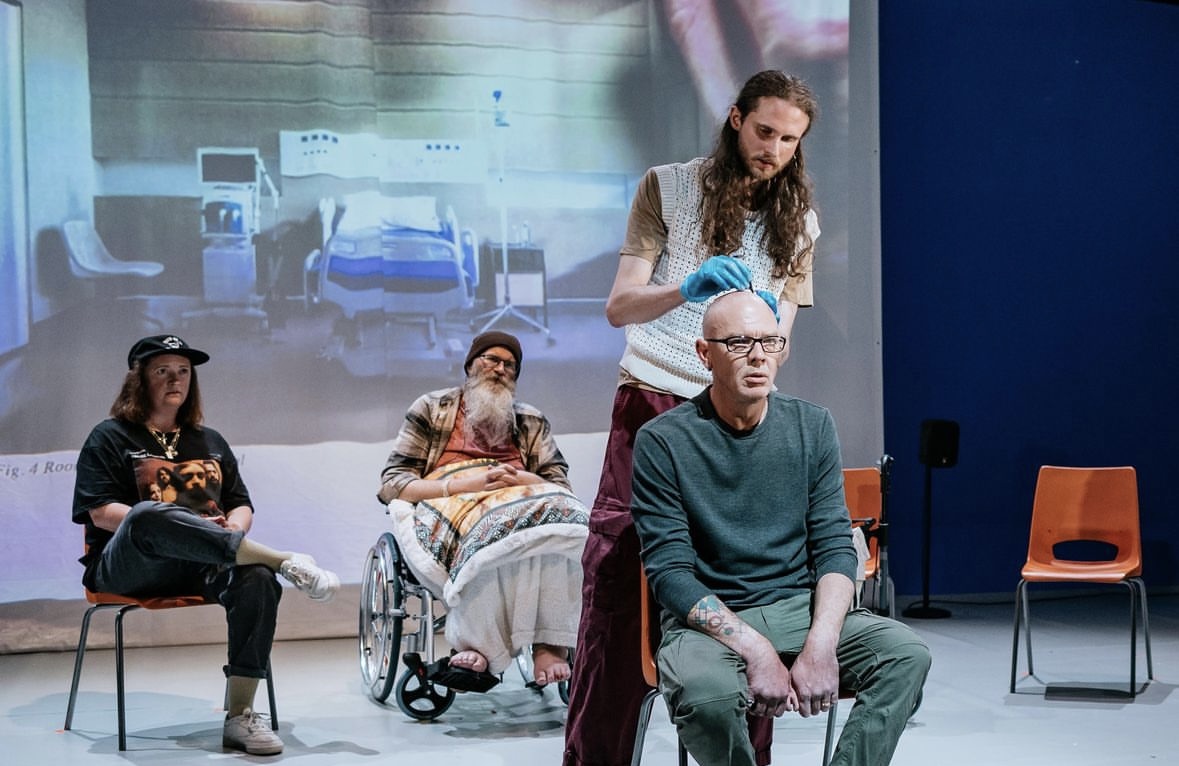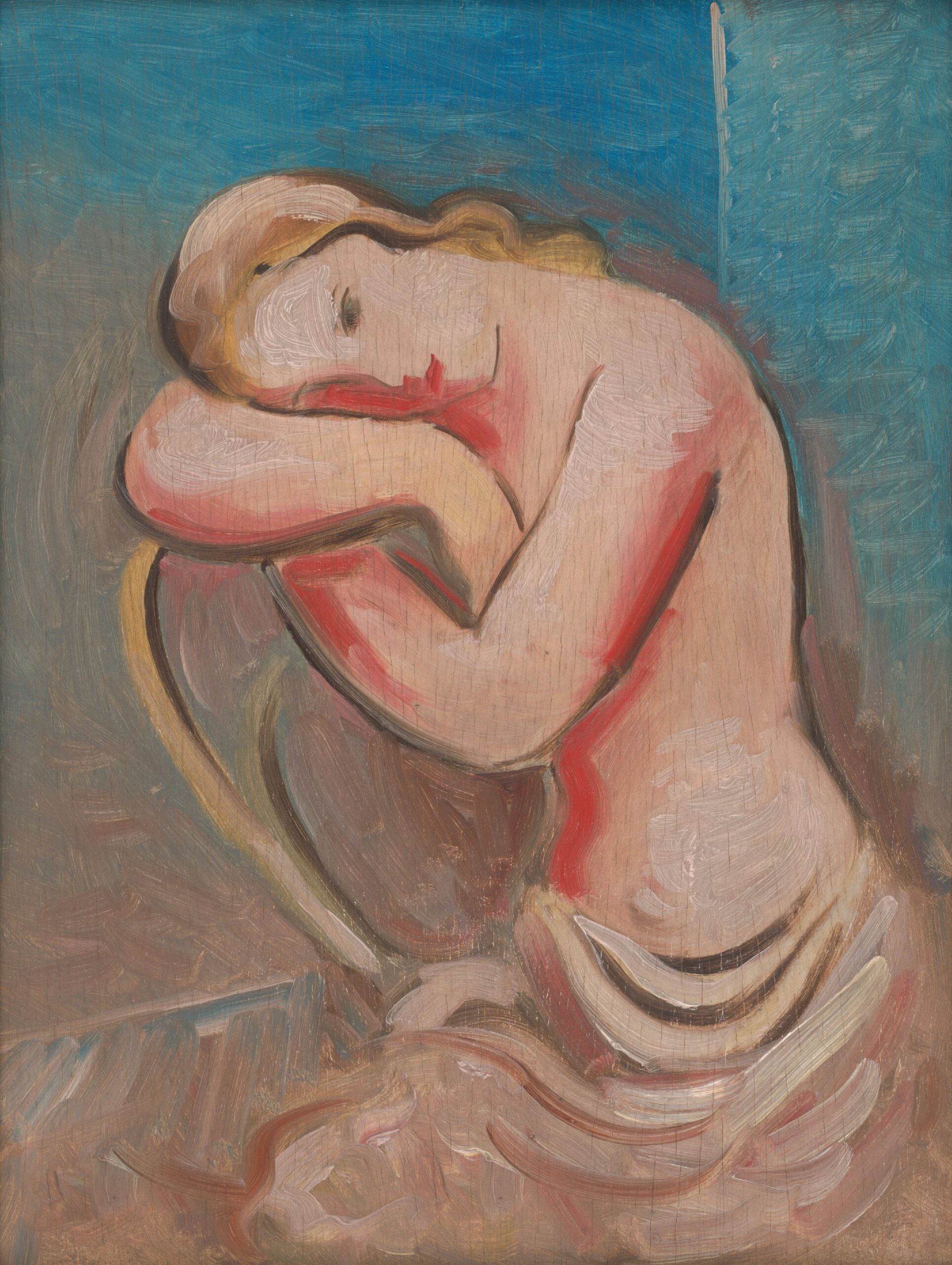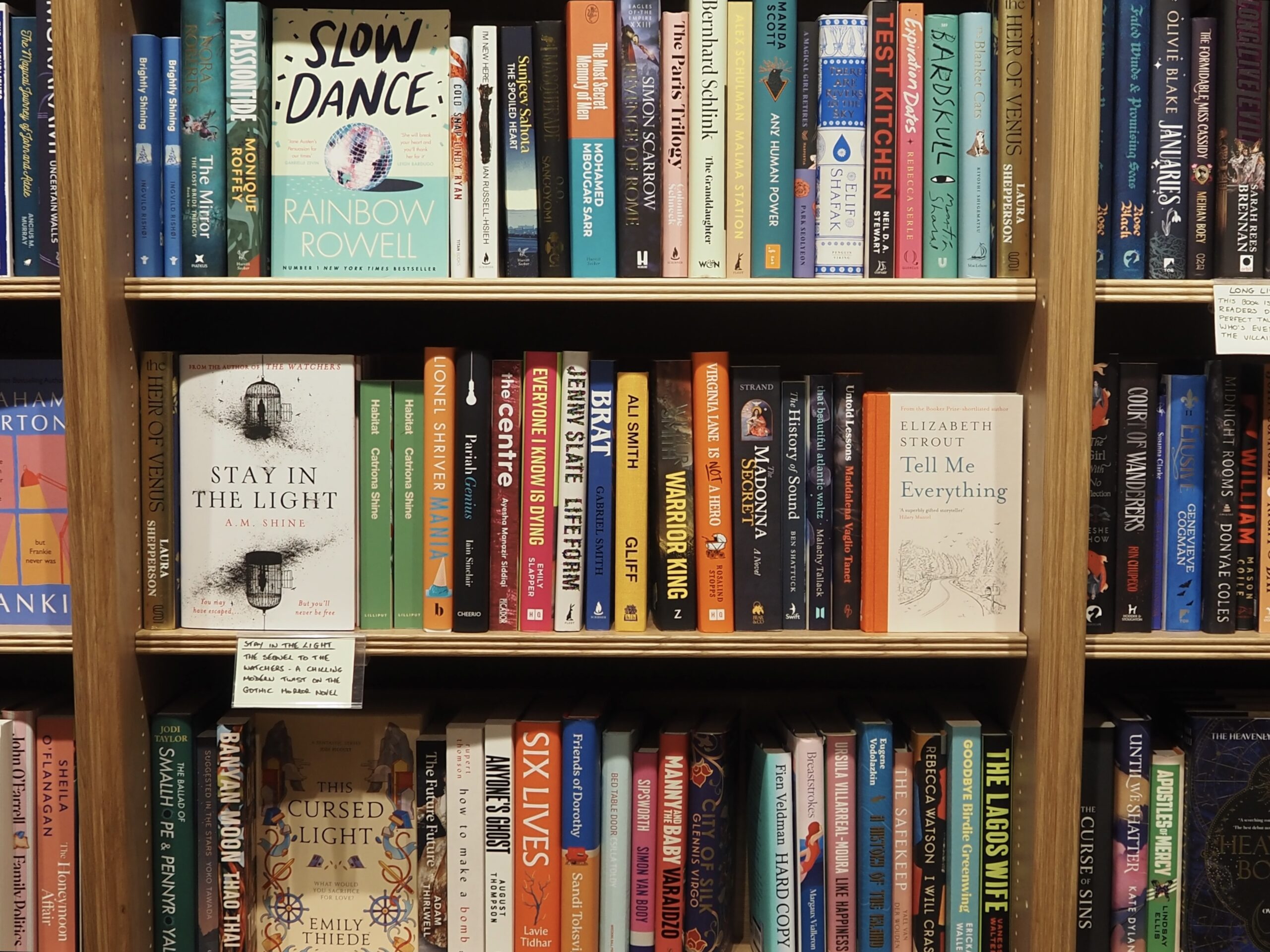Costume design is often about transforming actors into characters. But what happens when the actors are playing themselves, exploring the vulnerable reality of living with chronic illness?
In Dead Centre’s latest production, ‘Illness as Metaphor’, in Project Arts Centre, designer Mae Leahy took on a unique challenge: dressing a cast navigating both their personal experiences with long-term illness and the metaphoric layers of Susan Sontag’s iconic text.
Balancing the practicality of everyday wear with the demands of live performance, Leahy creates costumes that help confront—and question—our perceptions of wellness as she balances the delicate art of costume design for a play that challenges not just the body, but how we understand it.
- How did you approach the challenge of designing costumes for a play that is inherently about the body and how we perceive illness?
One of the first lines in the play is about how we “perform wellness”. Something I considered from the start was how the show is set in the very first developmental workshop, so I think the performance of self (though always a huge factor in costume design) was especially helpful in this design to begin. What does one wear that balances workshop practicality and meeting a group of collaborators for the first time?
Oftentimes, when we knowingly dress to meet new people, it’s in a more formalised or “dressy” setting, so my approach was trying to navigate that balance: comfort, practicality and the performance of self. Also on a practical level, we knew there would be live chroma playing on a blue screen from the start. It’s very sensitive so no blue!
- What role did the costumes play in balancing the metaphoric nature of theatre with the attempt to confront reality, as Sontag suggests?
During the show, the performers play each other. For example, the director (Ben Kidd) begins the show as himself, and shifts into playing Susan Sontag. One of the cast members (Una Mullally) then comes on as Ben, and so on. Our decision was for the cast to be costumed as themself and not the person they were playing to honour the realism of the cast being themselves but on stage.
We played the metaphor against reality by making it clear visually that they were performing another person’s illness. It created some beautiful moments where we saw someone engaging with their own experiences from the outside, as well as moments of levity.
It all sounds a bit complex in writing, but visually, it created this kind of juxtaposition between the real and the pretend that helped reinforce the show tonally and dramaturgically.
- Given that the production involves real people living with long-term illnesses, how did you work with these participants to develop costumes that reflect their realities? Were there specific choices made to ensure authenticity or comfort?
We had two weeks of development in April. It’s always a joy to be in the development stage as a designer! It doesn’t always happen, but when it does, I think it encourages a really collaborative and holistic approach to design. I spent the entire two weeks getting to know the ensemble’s style, what shapes and colours and textures they tend to gravitate towards, and any support or comforts they might need from their costume.
The whole process was like a styling-costume hybrid. I also had fittings early in the process, allowing as much time as possible to experiment, alter, and adapt things. It also gave us time for the cast to live in their costumes, to get used to performing in them. It was a really collaborative process, and was important that the cast felt like themselves, both from a comfort and stagecraft perspective.
I think in general there’s an inherent duty of care when it comes to costume designing for somebody. Clothes are such an intimate thing, especially for this show where there isn’t the shield of a character, it’s you (or a fictionalised version of you) on stage. The cast were just brilliant to work with, there was a huge amount of mutual trust and honesty about preferences and needs regarding clothes. I could design the most dynamic and visually striking costumes in the world, but if the person wearing it isn’t happy and comfortable in it, then I haven’t done my job correctly. That goes for any production, and certainly this one.
- How did you navigate the tension between traditional theatrical costume design and the need to strip away metaphor in this adaptation?
The design process differs from the traditional method of presenting your sketches after the first read- through. It’s a more organic process,it’s instinctual, there’s an inherent flexibility to it that you have to lean into as you collaborate with the directors, cast and other designers.
For the most part, this was a contemporary naturalist design. I wanted it to feel almost like the cast wore their own clothes on stage. Obviously, there’s always a level of practicality that comes into play when designing for theatre, even when keeping it as naturalistic as possible.
There’s an overarching colour palette; I worked with the set design (by Ellen Kirk) to create a cohesive aesthetic world in which the show takes place. Also, there’s a fair bit of mess in the show so doubles of the costumes are super important, including some pre-stained doubles and things that can hide and support the various special effects and mic packs. So though I designed it to feel like it’s the cast wearing their own clothes, it’s curated for theatre by necessity.
As much as I’d love to say it did, the cast really inspired my choices. I read Illness as Metaphor twice in the early stages of pre-production and I tried to approach it the same way I would a script, but in truth the costume design came up organically in the development room.







